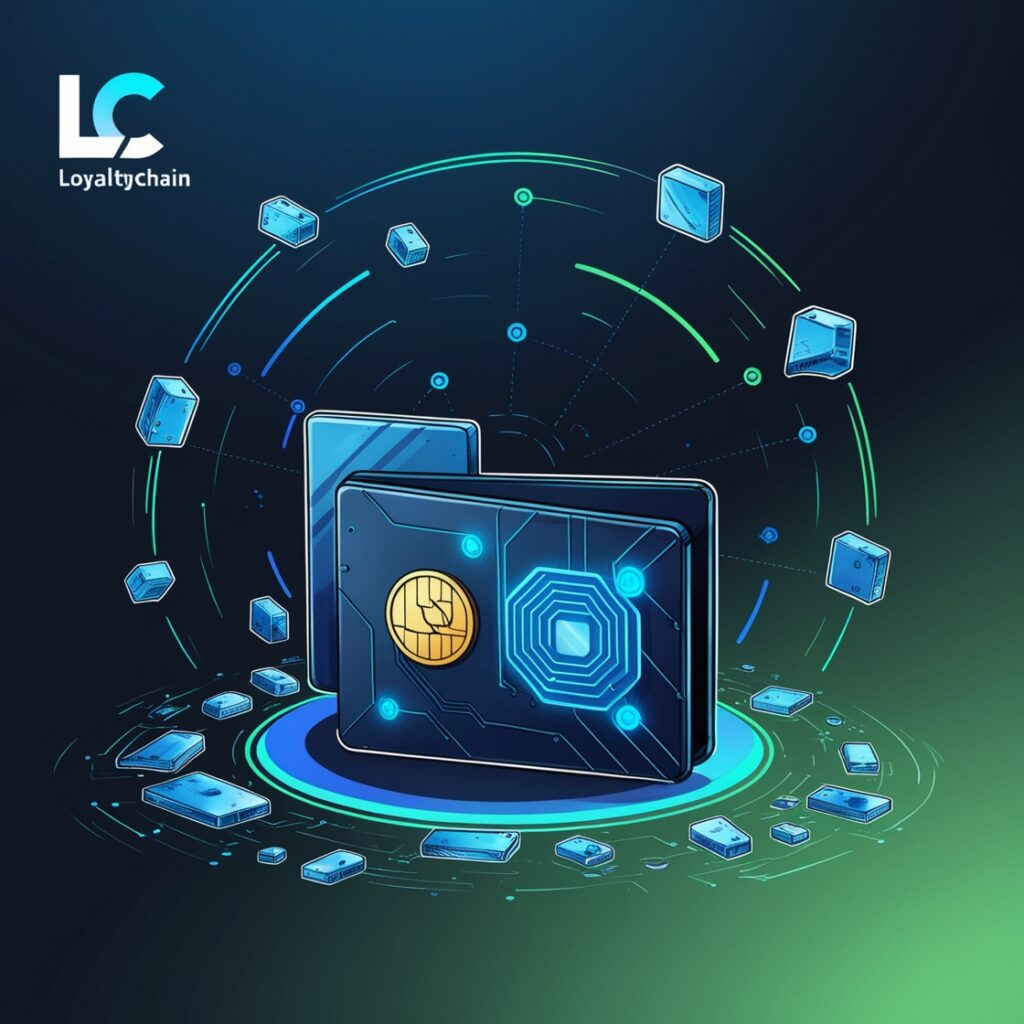In today’s competitive market, loyalty programs are essential for retaining customers and building brand trust. By integrating blockchain technology, businesses can create secure, transparent, and efficient loyalty systems. This guide will show you how to build a blockchain-based loyalty program for businesses, helping you deliver innovative customer experiences while increasing engagement.
Why Choose Blockchain for Loyalty Programs?
Blockchain introduces several key benefits to loyalty programs:
1. Transparency: Immutable records ensure customers trust the system.
2. Security: Prevents fraud and data breaches.
3. Interoperability: Tokens can be used across different businesses.
4. Cost Efficiency: Reduces administrative overhead.
5. Customer Empowerment: Customers can track and manage rewards easily.
Features of a Blockchain-Based Loyalty Program
To build a robust loyalty program, consider incorporating:
• Tokenized Rewards: Use blockchain tokens instead of points.
• Smart Contracts: Automate reward distribution and redemption.
• Interchangeable Rewards: Enable cross-business reward usage.
• Real-Time Updates: Instantly update customer balances and activities.
Steps to Build a Blockchain-Based Loyalty Program
1. Define Program Goals and Structure
Start by outlining the key objectives of your loyalty program:
• What actions will earn rewards (e.g., purchases, referrals)?
• How will customers redeem rewards?
• Will rewards have an expiration date?
Clearly define the type of rewards, such as token-based incentives or discounts, and whether the program will be exclusive or collaborative with other brands.
2. Choose the Right Blockchain Platform
Select a blockchain platform that aligns with your goals. Popular options include:
• Ethereum: Ideal for smart contract functionality but can have high gas fees.
• Polygon: Offers low-cost transactions and Ethereum compatibility.
• Binance Smart Chain: Scalable and cost-efficient for high transaction volumes.
• Hyperledger Fabric: Suitable for private, permissioned loyalty networks.
3. Design and Develop Smart Contracts
Smart contracts are the backbone of a blockchain-based loyalty program. They automate tasks like:
• Issuing rewards when customers meet criteria.
• Validating reward redemptions.
• Managing token transfers between customers and the business.
Here’s an example of a simple Solidity smart contract:

This contract tracks and manages loyalty points for each customer.
4. Build a User-Friendly Interface
Customers need an easy way to access and manage their rewards. Develop a web or mobile app with features like:
• Account registration and login.
• Reward balance tracking.
• Reward redemption options.
Use tools like React for the frontend and integrate blockchain functionality with Web3.js or Ethers.js libraries.
5. Tokenize the Rewards System
Replace traditional points with blockchain tokens. These tokens can:
• Be traded or transferred between users.
• Gain value if the program expands.
• Be used in other partnered programs.
Create and deploy tokens on the chosen blockchain using standards like ERC-20 for fungible tokens or ERC-721 for unique, non-fungible rewards.
6. Integrate Wallets for Accessibility
Customers need wallets to interact with your loyalty program. Use wallet solutions like:
• MetaMask: For Ethereum-based programs.
• Trust Wallet: For multi-chain compatibility.
• Custom Wallet: Build a branded wallet app for seamless user experience.
7. Test and Deploy Your Program
Before launching, conduct rigorous testing:
• Simulate reward issuance and redemption under various conditions.
• Test for vulnerabilities in smart contracts using tools like MythX.
• Gather user feedback through beta testing.
Deploy the program on a blockchain testnet before transitioning to the mainnet.
Benefits of a Blockchain-Based Loyalty Program
1. Customer Trust: Blockchain’s transparency reassures customers of program fairness.
2. Global Reach: Tokens can be used across borders without exchange rate concerns.
3. Data Privacy: Customers retain control of their data.
4. Brand Partnerships: Interoperable tokens enable cross-business collaborations.
Challenges and Solutions
1. High Transaction Costs
• Solution: Use Layer-2 solutions like Polygon or Optimism.
2. Complexity for Users
• Solution: Provide clear guides and a simple user interface.
3. Regulatory Compliance
• Solution: Ensure the program complies with local laws regarding digital assets and rewards.
Real-World Examples of Blockchain Loyalty Programs
1. Starbucks: Exploring blockchain for reward transparency.
2. Singapore Airlines KrisPay: Uses blockchain for loyalty point conversions.
3. American Express: Blockchain-enabled Membership Rewards program for seamless transactions.
Future Trends in Blockchain Loyalty Programs
1. AI Integration: Personalized reward recommendations.
2. Gamification: Adding interactive elements like challenges and levels.
3. Decentralized Identity: Enhanced user privacy and control.
4. NFT Rewards: Unique digital collectibles as loyalty incentives.

Conclusion
Building a blockchain-based loyalty program for businesses offers numerous advantages, from enhanced security and transparency to greater customer engagement. By following this guide, you can design a loyalty system that not only meets modern customer expectations but also positions your business as an innovator.
Start leveraging blockchain technology today to redefine loyalty programs and drive long-term customer retention!




Your article helped me a lot, is there any more related content? Thanks!
Thank you for your sharing. I am worried that I lack creative ideas. It is your article that makes me full of hope. Thank you. But, I have a question, can you help me?
Your point of view caught my eye and was very interesting. Thanks. I have a question for you.
Thank you for your sharing. I am worried that I lack creative ideas. It is your article that makes me full of hope. Thank you. But, I have a question, can you help me?
Can you be more specific about the content of your article? After reading it, I still have some doubts. Hope you can help me.
Thank you for your sharing. I am worried that I lack creative ideas. It is your article that makes me full of hope. Thank you. But, I have a question, can you help me?
Here to dive into discussions, share thoughts, and learn something new as I go.
I’m interested in learning from different perspectives and sharing my input when it’s helpful. Interested in hearing new ideas and meeting like-minded people.
That’s my website:https://automisto24.com.ua/
Here to explore discussions, share experiences, and gain fresh perspectives throughout the journey.
I’m interested in learning from different perspectives and sharing my input when it’s helpful. Always open to different experiences and building connections.
There is my web-site:https://automisto24.com.ua/
Hey there! Do you use Twitter? I’d like to follow you if that would be okay.
I’m undoubtedly enjoying your blog and look forward to
new updates. http://Boyarka-Inform.com/
Selesct the Right Slot Game
Not all online slots are made alike. Some have more favorable RTP, more engaging bonus features, or visuals that are simply more enjoyable
too play like Thepokies106. Always check the RTP (Return to Player)
percentage—a higher RTP means a greater likelihood over time.
Try out different games in demo mode fifst to see wich ones you find rewarding and which
give you the best value. https://It.Trustpilot.com/review/totaalvoetbal.it
Thank you for your sharing. I am worried that I lack creative ideas. It is your article that makes me full of hope. Thank you. But, I have a question, can you help me? https://accounts.binance.com/uk-UA/register?ref=W0BCQMF1
доставка цветов цена заказать цветы с доставкой
доставка цветов недорого доставка цветов цена
Read the latest world sports news: football, hockey, basketball, MMA, tennis and more. Insiders, forecasts, reports from the scene. Everything that is important for sports fans to know – in one place.
Наш агрегатор – beautyplaces.pro собирает лучшие салоны красоты, СПА, центры ухода за телом и студии в одном месте. Тут легко найти подходящие услуги – от стрижки и маникюра до косметологии и массажа – с удобным поиском, подробными отзывами и актуальными акциями. Забронируйте визит за пару кликов https://beautyplaces.pro/uslugi/detskij-manikyur/
https://www.glicol.ru/
Du möchtest wissen, ob es möglich ist, im Online Casino Österreich legal zu spielen und welche Anbieter dafür infrage kommen? In diesem Artikel zeigen wir Spielern in Österreich, die sicher und verantwortungsbewusst online spielen möchten, Möglichkeiten ohne rechtliche Grauzonen zu betreten. Lies weiter, um die besten Tipps und rechtlichen Hintergründe zu entdecken: Online Casino
Your point of view caught my eye and was very interesting. Thanks. I have a question for you.